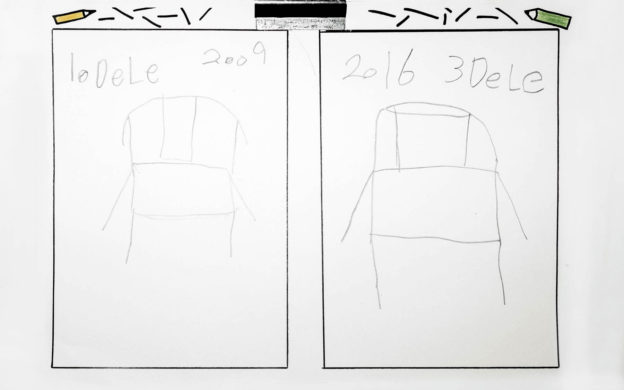Design – good design, that is – can be used in any imaginable way to make our lives easier. For Designmuseum Danmark, the Copenahagen museum that explores design and craft history, it is the key to making the world a better place. Designmuseum Danmark (DMD) began running workshops for refugee children living in Copenhagen that are currently in limbo with their asylum applications in 2016. “They are kids who don’t necessarily know what is going to happen next in their lives, and they’ve already come from an unstable situation,” explains Project Manager Kirsten Lassen. “So we run the workshops in partnership with Red Cross, who run the school for the children.”
The workshop project, called “I Can Create,” hosts children ages 6 – 13 in the design school space of the museum, located in the back in a light-filled studio. “There’s a big age difference, and the kids can be at entirely different stages, so we have to be very inclusive with how we teach,” says Kirsten.
This is compounded by the fact that, for the most part, the children don’t speak Danish. And they often don’t speak the same language as one another, so communication can be difficult. “We’ve developed a very simple set of pictograms that we use to help teach the children. It works very well! It’s amazing how much we can share without language,” Lassen says.
But the design workshops themselves are the end product of what has been a long curriculum development. Because these are children who have very specific emotional needs, the DMD staff needs to be trained in how best to teach and connect with them. “I have taken a course called ‘Empathy and Presence’ that taught me how to be really be present with the children during each workshop, and how to relate to them, and help them relate to each other.”

That pedagogical approach is something that DMD feels should be made available to a wider audience. “We want to take that curriculum and create something more universal out of it, so that other museums and cultural organisations can do similar kinds of work. Others should be doing this kind of work; we see first hand that the children enjoy and benefit from it!”
Now that the teaching approach is solidified, the real content of the workshops is in focus. The children are given a design brief and asked to create something, such as a chair. It’s a hands-on workshop that takes the children through the thought process of a designer: what is a char, what does it need to be, what can make it better? And then the children actually produce something physical.
“We want them not only to develop those problem-solving skills, but also to feel a sense of accomplishment. That’s the idea of calling it ‘I Can Create;’ helping children to feel that these things are possible.”
Understanding design is such an integral part of how Danes perceive the world. I ask Kirsten if she thinks that the workshops not only help the children develop skills, but if they actually help the children feel more at home in the country. “Maybe!” She says, thinking about it. “It’s hard to know, because some of the children will end up staying in Denmark and some won’t. So the workshops can’t really be about that. It has to be about their needs as children.”

The more we discuss, the more I see how passionate Kirsten is, not only about design, but about imparting something to these children that will be foundational in their way of thinking. She finishes: “We’ve got this great space, and great staff, and something important to teach. We need to give something back!”
Find out more about Designmuseum Danmark’s Designskole and the workshops they run.

